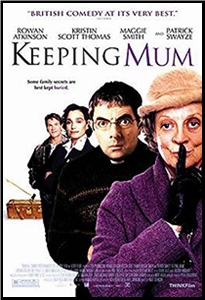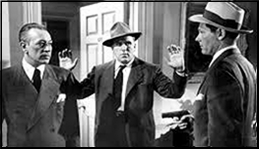SELECTED BY DAVID VINEYARD:
FRED M. WHITE “The Scrip of Death.” Short story. Dr. Victor Colonna #1. First published in Pearson’s Magazine, London, July 1898. Collected in The Last of the Borgias: Being the Strange History of Victor Colonna, Professor of Science,and his Experiments in the Lost Art of Poisoning., hardcover, 1898? Reprinted by The Battered Silicon Dispatch Box, softcover, date? [Announced; may have never been published.] Available online here.
“You want me to use my method to murder someone?â€
“To be perfectly frank with you, I do.â€
The lady making the request is the beautiful Ellen Longwater, who claims her wealthy and famous family is in danger of ruin, and the man she has made the request of is none other than Dr. Victor Colonna, who has just given a lecture on his discovery of the rarest of all tomes, the poison book of none other than Lucretia Borgia (before history revealed she was more victim than monster), meaning, according to his own lecture, that he is master of poisons unknown to mankind, capable of bringing nations to their knees if he chose, and a veritable judge, jury, and executioner no court could hope to prove anything on thanks to his undetectable poisons.
Of course Dr. Colonna was only speculating. Ellen Longwater is serious.
Fred M. White was one of the most popular and prolific writers of the period, his name as well known on magazine covers as Conan Doyle, and his stories encompassed multiple series including adventure, mystery, secret service, and early science fiction. He particularly did well in the then popular disaster genre of which Conan Doyle’s Professor Challenger story “The Poison Cloud†is one of the better known examples today.
But Victor Colonna is surely the oddest detective hero anyone ever came up with, sleuth and avenger but far from the clean cut way of most British heroes, and the six long stories comprising the “Last of the Borgias” series are among the oddest of their kind, with Colonna one of those late Victorian supermen who are above mere law, a long haired aesthete with a no compunction about making God like interventions in the lives of mere mortals.
To be fair to White and the genre, it wasn’t until Ellery Queen in The Door Between that anyone seemed to bring up the question of what all this God like behavior might lead to in classic detective fiction. Before then other than an occasional insight the brilliant sleuth’s mere existence seemed to justify his actions, even if Peter Wimsey wept over the execution of the man he sent to the gallows, he didn’t question his right or duty to do so.
And to ruffle feathers further these stories violate the heck out of Detection Club Rules about “poisons unknown to science.†Dr. Fu Manchu could take a hint or two from Dr. Colonna.
This being the Victorian age Dr. Colonna doesn’t hesitate to come to the aid of a lady in distress:
“I am prepared to sign a document which you will draw up, fully implicating myself. You may regard me as a madwoman—to all practical purposes I am. It makes me mad to see our ancient family, our prestige and money and influence in the throttling grasp of a scoundrel! Unless something is done, Count Henri Felspar will destroy us.”
“Oh, then Felspar is to be my victim!”
“Yes, yes. You speak as if you knew him.”
“By repute I know him very well indeed,” Colonna replied. “Felspar is a man of science like myself. He enjoys a high reputation.”
So in his first case, Colonna is already up against a veritable Moriarity, though I have to say Felspar is a particularly thud ear name for a super villain. I suppose he could have named him Yardarm instead..
Colonna assures us Felspar is a “bad un,†a brilliant chemist, but a blackmailer and worse, and his plot to marry the Princess Esme of Valdamir (names of people and places in this one aren’t White’s strong suit) not only threatens the happiness of Ellen Longwater’s son who also hopes to marry her, but also the fortune and fate of a great family because Felspar can prove Ellen’s son is not the heir to a great family he claims and destroy his hopes with Esme.
You can almost imagine Victorian era audiences booing Felspar as they read. How dare a dirty foreigner interfere with a handsome young Englishman defrauding a foreign Princess.
How Colonna confronts Felspar, and ultimately removes the Count as a threat frankly isn’t worth the build up. White writes well enough, but basically once Colonna accepts the commission to rid the family of Count Felspar the story grinds to a halt.
There is some artificial suspense at a public gathering while the Count reads his prepared revelation and Colonna softly counts down to the moment Felspar falls victim to the poison, then a frankly anti-climactic reveal of how he administered the poison (not only unknown to science, but so mysterious we don’t even get a hint of what was in it — at least Fu Manchu used spider and snake venom) and used simple misdirection to steal the revealing papers in the dead man’s pocket.
To be frank, by that point I was imagining Sherlock Holmes, Dr. Thorndyke, or Father Brown feeling quite content to have sent our hero to the gallows. Somehow this sort of thing was much more satisfying when the Saint disposed of a total rotter with a bit of cleaning fluid on his tie, or Bulldog Drummond snapped his neck. Nor does the not so subtle jingoism and xenophobia of Colonna using nasty Italian poisons, appearing quite foreign, and having an Italian name escape the modern reader.
It’s no wonder there was only one series of adventures for Dr. Colonna, just reading the first one leaves the reader in need of a shower.
Complete contents of The Last of the Borgias. All are Victor Colonna stories:
The Scrip Of Death
The Crimson Streak
The Holy Rose
The Saving of Serena
The Varteg Necklace
The Three Carnations





